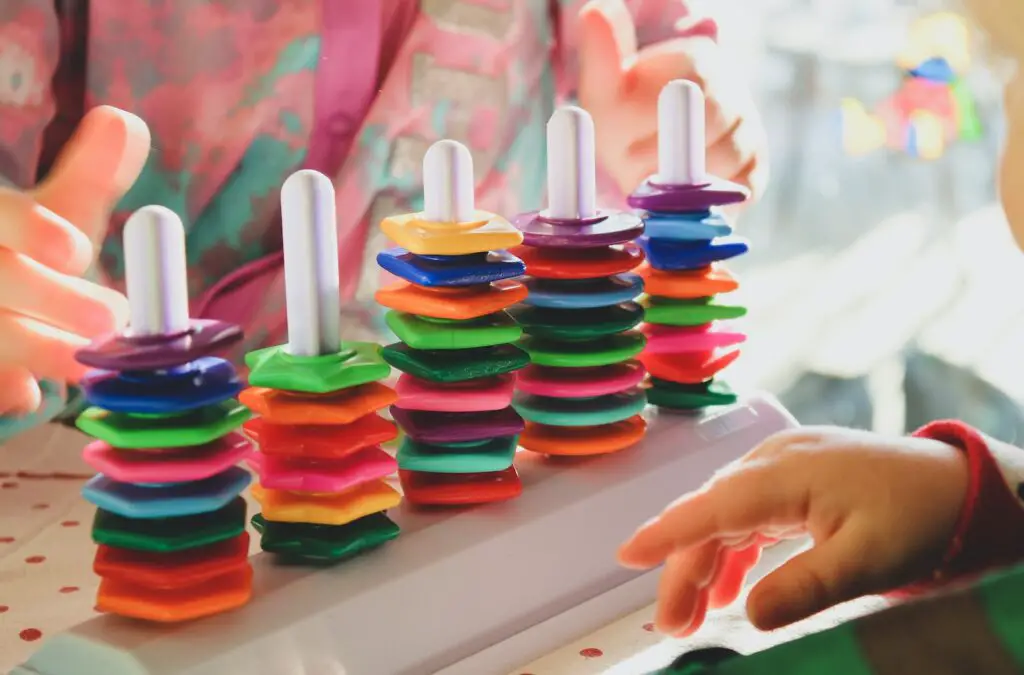What is a sensory toy?
A sensory toy is a toy that is designed to stimulate one or more of the senses, such as sight, sound, touch, taste, or smell. Sensory toys can be used to engage children in play and help them to explore and learn about the world around them. They are often used with children who have sensory processing disorders, such as autism, as well as with typically developing children.
There are many different types of sensory toys, including toys that make noise, toys that light up or change color, toys that have different textures or materials, and toys that have a distinct smell or taste. Some examples of sensory toys include bubble machines, light-up toys, musical instruments, and textured balls.
To determine if a toy is sensory, you can look for the following characteristics:
- Does the toy engage one or more of the senses, such as sight, sound, touch, taste, or smell?
- Does the toy provide stimulation or sensory input, such as lights, sounds, textures, or smells?
- Does the toy allow the child to explore and interact with their environment in a sensory way?
Sensory toys are designed to engage and stimulate the senses, and can be a valuable tool for children with sensory processing disorders, as well as for typically developing children.
What are the most purchased sensory toys?
The popularity of different toys can vary widely depending on the preferences of individual consumers. Here are a few examples of sensory toys that have been popular in recent years:
- Bubble machines: Bubble machines are a popular sensory toy that provide visual and auditory stimulation. They are often used to engage children in play and help them to develop their senses.
- Light-up toys: Toys that light up or change color can be a popular choice for children who are attracted to visual stimuli. These toys can provide a range of sensory input, including light and color.
- Musical instruments: Musical instruments, such as xylophones, drums, and maracas, can provide auditory and tactile stimulation for children. These toys can help children to develop their fine motor skills and their sense of rhythm and melody.
- Textured balls: Balls with different textures, such as soft, bumpy, or spiky, can provide tactile stimulation for children. These toys can help children to develop their sense of touch and to explore different sensations.
Ideas for Sensory Toys For Autism
Sensory toys can be a great way to engage and stimulate children with autism. Here are some ideas for sensory toys that may be particularly beneficial for children with autism:
- Weighted blankets or vests: Weighted blankets and vests can provide a sense of comfort and security for children with autism. The weight of the blanket or vest can have a calming effect on the child, which can be particularly helpful for children who have sensory processing disorder or anxiety.
- Textured toys: Toys with different textures, such as soft stuffed animals or bumpy balls, can be a fun and engaging way for children with autism to explore their senses.
- Light-up toys: Toys that light up or flash can be a great way to engage children with autism. These toys can provide a visual stimulation that can be particularly appealing to children with autism.
- Sensory playdough: Playdough is a classic sensory toy that can provide a sense of resistance and texture for children with autism. You can also add other sensory elements to playdough, such as glitter or essential oils, to add an extra layer of sensory stimulation.
- Musical instruments: Musical instruments can provide a fun and interactive way for children with autism to explore their senses. Drums, xylophones, and other percussion instruments can be particularly appealing to children with autism.
- Sensory bottles: Sensory bottles are a simple and easy-to-make sensory toy. You can create a sensory bottle by filling a clear bottle with water, food coloring, and small objects such as beads or glitter. The child can then shake the bottle to create a sensory experience.
- Foam blocks with different textures such as bumpy, smooth, sticky, soft and hard
- Water beads
- Magnetic play boards where children can arrange magnetic objects in different patterns to help stimulate their senses.
- Soft toys with different textures such as fuzzy, bumpy and smooth
- Play-dough mats where children can make different shapes and patterns with play dough.
- Pipe cleaners that children can twist together to form different shapes.
- Magnetic letter boards that children can arrange magnetic letters to spell their name or other words.
- Stacking cups and blocks that can be arranged in different ways to form patterns, shapes and structures.
- Building blocks
- Cotton balls and sponges that children can squeeze to make different sounds.
- Vibrating toys such as rattle toys or anything with a motor inside to stimulate their senses.
- Water tables where children can play with water and sand together to form different shapes.
- Wooden puzzles that have different shapes on each side and require children to fit them together correctly
- Pom poms, bean bags and other soft toys
- Sensory materials including sand paper, play dough, shaving cream and bubbles.
- Balls with different textures such as bumpy, smooth, sticky and hard
- Clay to make shapes or forms
Sensory toys can help your child with autism in many ways. They can keep them occupied for hours, increase focus and attention span, and improve their social skills. In addition, sensory toys are great at helping children with autism process what they’re feeling when they have difficulty communicating verbally or using other means of expression.



